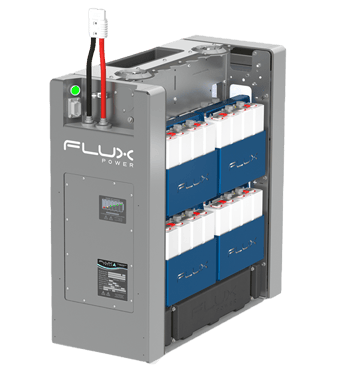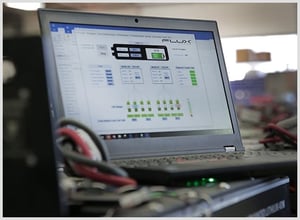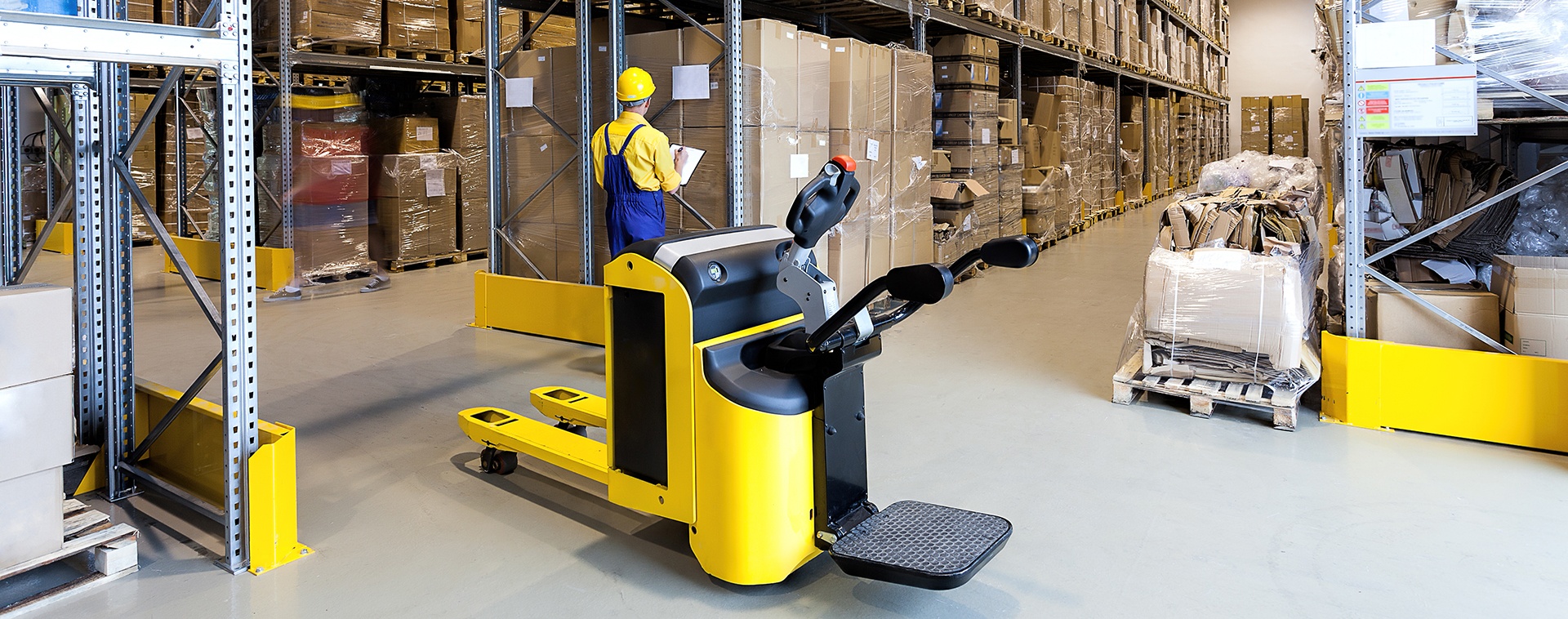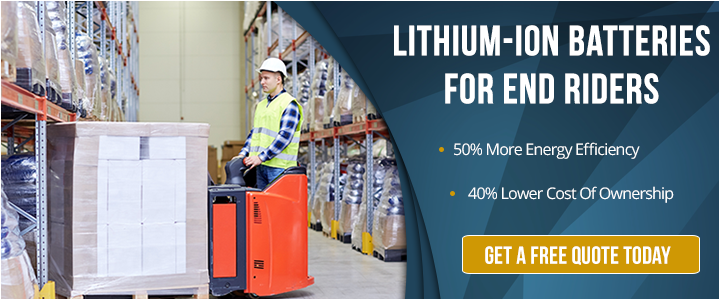No matter what type of electric material handling equipment you use, the type of battery you use has a major impact on how efficiently they run.
Unfortunately, all batteries are not made the same.
There are two types of batteries that are most commonly used for this type of equipment…lead acid and lithium-ion. It is important to know the differences between the two when selecting which one you will use.
Which Forklifts Work On A 24-Volt Forklift Battery?

24-volt batteries work on four types of forklifts:
1. End Riders
2. Center Riders
3. Walkie Pallet Jacks
4. Walkie Stackers
For other types of forklifts, a larger battery type is needed.
Lead-Acid or Lithium-ion Battery?
Lead acid or lithium-ion is the $100,000 question of the material handling world. Deciding on which one is the better option comes down to a few crucial differences between the two.
Here are some key differences between lead acid and lithium-ion batteries listed by category:
The Charging Process
Lead acid batteries require a much more complicated process for charging. The equipment needs to be taken to a dedicated charging room, the battery removed with special equipment because of its weight, placed on a shelf and the charger connected. During charging, these batteries release heat and hydrogen gases, which can be dangerous to employees.
Since lead is so heavy, lead acid batteries of 24 volts can weigh up to 1,500 pounds. In the time it takes to drive a forklift to the charging room and swap out a lead acid battery (30 to 45 minutes), a lithium-ion battery could be substantially charged during that same time. That is because the lithium-ion battery can be charged while still in the equipment.
When it comes to charging, there isn’t much of a comparison.
Maintenance
Lead acid batteries require a large amount of maintenance. The batteries must be watered weekly and the cells equalized regularly. The batteries must also be charged and stored in a well-ventilated room.
Lithium-ion batteries require far less maintenance. Their cells balance automatically when being charged, don’t have fluid levels that need to be monitored and can be charged while still in the equipment.
Charging Time
Lead acid batteries come with a number of complications when it comes to charging. Lead acid batteries typically require 8 hours for charging and an additional 8 hours for a “cooling off” period because of the heat build-up. The total process is 16 hours.
The batteries must also be in a well-ventilated room to avoid accidents because they put out gases and heat when charging.
Lithium-ion batteries are comparatively hassle-free. The charge time is typically 1 to 2 hours and can be done while the battery is still in the equipment. This means that lithium-ion batteries don’t require a dedicated room or other devices to remove them from the equipment for charging.
Opportunity Charge
Lead acid batteries lose power rapidly as they are used. During the last four hours of use, the equipment being powered by lead acid batteries will show signs of slowing before needing to be recharged. This means that companies must have at least two batteries cycling between charging and being used. For companies that work three shifts, a third battery would be necessary.
Lithium-ion batteries maintain their power throughout their charge. Therefore, hour number eight can be as productive as hour number one. The fast recharge time means the battery doesn’t even have to come out of the forklift. It can be charged quickly, without hassle before getting back to work.
Service Life
Lead acid batteries have roughly half the life of lithium-ion batteries. A lead acid battery may last between 1000 and 1500 cycles, while a lithium-ion battery typically lasts between 2000 and 3000 cycles.
Safety Hazards
Lead acid batteries are made from toxic lead and sulfuric acid, potentially dangerous chemicals. These batteries require “watering” and other basic maintenance. If not properly cared for, lead acid batteries can become explosive at full charge.
They also heat up during charging and then need time to cool off. This means that lead acid batteries must be stored in a temperature-controlled room during that time.
Lithium-ion batteries are typically made from lithium iron phosphate or lithium nickel manganese cobalt oxide. Because these batteries are sealed shut, they are far more stable and less dangerous. You can read more in our article, Lithium-ion Battery Materials and Why Their Chemistries Matter.
Power Savings
Lead acid batteries use a 100-year old technology. Therefore, they have some inefficiencies compared to lithium-ion which is a comparatively new technology.
Benefits of lithium-ion include higher sustained voltage and up to 50% energy savings. Sustained voltage means that equipment powered by lithium-ion runs at full power, as opposed to lead acid which loses powers as the battery is discharged.
Battery Management Systems
A battery management system works to electronically control and regulate the charging and discharging of the batteries. It should be noted that battery management systems are available for both lithium-ion batteries and lead acid.
 Quality battery management systems oversee the following aspects of batteries:
Quality battery management systems oversee the following aspects of batteries:
- Battery and Cell Well-being
- Main Power Voltage
- Rate of Charging & Discharging
- Temperature of Cells & Batteries
- Battery & Cell Voltage
- Coolant Temperature & Airflow/Liquid Cooling
A battery management system ensures that batteries run for the longest possible time at the maximum efficiency, even when the battery isn’t fully charged. By monitoring and regulating the above aspects of your battery, the battery management system helps to extend the life of the battery and helps you get the absolute most out of your battery.
Bottom Line
Just to recap, lithium-ion batteries are lighter, are more efficient, last longer, recharge faster, cost less over their lifetime, maintain voltage more effectively, are easier to use and require less maintenance.
It shouldn’t come as too much of a surprise. Lithium-ion technology is cleaner, more efficient and less costly over time.












